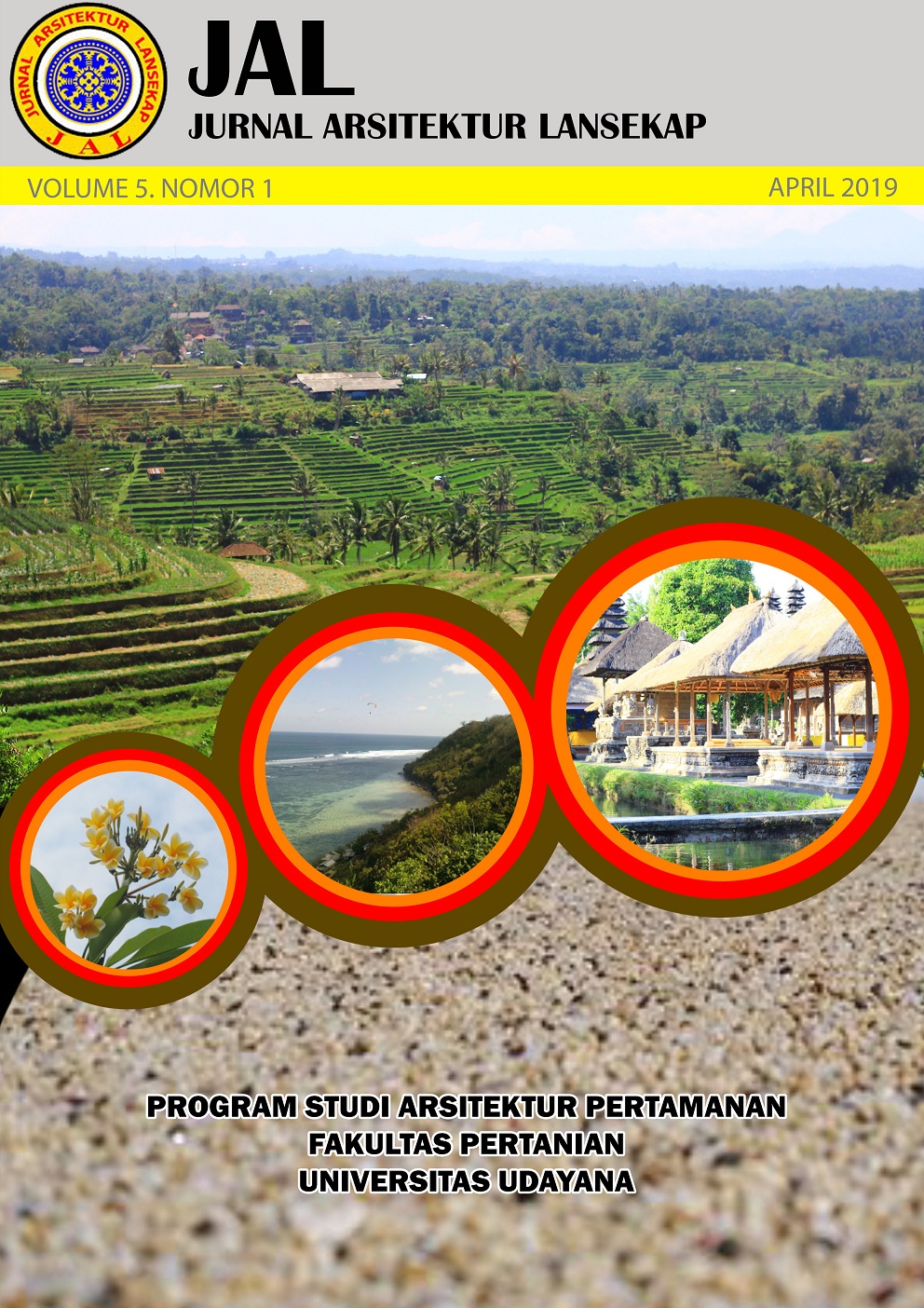Studi potensi hutan mangrove di Pulau Serangan sebagai kawasan ekowisata
Abstract
Study on the potency of mangroves forest in Serangan Island as ecotourism area in South Denpasar District, Denpasar, Bali. Mangrove Forest on Serangan Island is an area managed by PT.Bali Turtle Island Development (BTID) which is a government land under the supervision of the Bali Provincial Forestry Agency (Dinas Kehutanan Provinsi Bali) and Nature Resource Conservation Center (BKSDA). The total area of mangrove forest about of 33 hectares, the mangrove forest in Serangan Island indicate to have biophysic potency such diversity of mangrove species and diversity of fauna. The purpose of this study is to identify the biodiversity of mangrove forests and to assess the suitability of mangrove forests as ecotourism areas. The method used in this research was the conformity analysis proposed by Bahar (2004) and Yulianda (2007) to assess the potency of mangrove forest with biophysical approach. The results of this study found that the area of mangrove forest on Serangan Island was dominated by mangrove species Sonneratia and Rhizopora, with diversity of fauna found such as birds, reptiles, and marine biota at each point of observation area. The tourist suitability index (Ik) of mangrove forest was 153 and belong to medium category or potentially as an ecotourism area. Recommendation for ecotourism development area of mangrove forest consist of basic concept of development which were buffer area and eco-tourism area. Then ecotourism activities were develop e.g natural interpretation, nature viewing, bird watching, photo hunting, board walks, and fishing. In addition, support from local community and tourists around the mangrove forest was very much to developed Serangan Island as an ecotourism area.
Downloads
References
Ekowisata di Gugus Pulau Tanake Kabupaten Takalar Sulawesi Selatan, Tesis, Sekolah Pasca
Sarjana Program Studi Pengelolaan Sumberdaya Pesisir dan Lautan, Institut Pertanian Bogor.
Bali Turtle Island Development Anonym.2012. Selayang Serangan Tersedia online: http://btid.co.id/pulau
serangan/ (Diakses 18 September 2017).
BMKG Ngurah Rai, Denpasar Selatan, Bali. 2018. Data Suhu Desa Suwung Kangin, Denpasar Selatan, Bali.
BPS Kota Denpasar, 2014. Data Mata Pencaharian Masyarakat Serangan .2014
Dinas Pariwisata Daerah provinsi Bali. 2012. Jumlah Wisatawan Pada Kunjungan Obyek-Obyek Wisata di
Bali Available Online at: (www.disparda.baliprov.go.id/id/Statistik4) (Diakses 27 Juli 2018)
Forum Peduli Mangrove Bali.2012. Fakta Mangrove di Bali Available online at: (http://fpmbali.org/mangrove/bali) (Diakses 18 September 2017)
Kerlinger. F. N. (1973). Founding of Behavior Research, Holt. Rinchart and Winston Inc. New York.
Muntasib, E.K.S.H. 2005. Pengembangan ekowisata Indonesia dalam rangka meningkatkan devisa negara dari sektor pariwisata. Prosiding Seminar Ekowisata, Pekan Ilmiah Kehutanan Nasional. Badan Eksekutif Mahasiswa, Fakultas Kehutanan, IPB. Bogor. 39p.
Nunung Rozalina, Arif Pratomo, Apdilah Donny. 2014. Kesesuaian Kawasan Untuk Pengembangan
Ekowisata Mangrove Berdasarkan Biofisik di Desa Tembeling Kecamatan Teluk Bintan Kabupaten Bintan. Tersedia Online: http://jurnal.umrah.ac.id (Diakses 7 Agustus 2018)
Peraturan Pemerintah Tahun .1999. Peraturan Pemerintah Republik Indonesia No.7 Tahun 1999 Tentang
Pengawetan Jenis Tumbuhan dan Satwa
Woinarski Lisa. 2002. Pulau Serangan: Dampak Pembangunan Pada Lingkungan dan Masyarakat. Tersedia
Online: http://www.acicis.edu.au (Diakses 7 Agustus 2018).
Yulianda, F.2007. Ekowisata bahari sebagai alternatif pemanfaatan sumber daya pesisir berbasis konservasi. Makalah Seminar Sains pada Departemen Manajemen Sumberdaya Perairan. Fakultas Perikanan dan Ilmu Kelautan IPB. Bogor.
Zain, A.F.M. 2008. Perencanaan dan desain lanskap tapak ekowisata. Ekoturisme: Teori dan Praktek. Bogor.
1:133-167p

This work is licensed under a Creative Commons Attribution 4.0 International License.
An author who publishes in the Jurnal Arsitektur Lansekap (JAL) agrees to the following terms:
- Author retains the copyright and grants the journal the right of first publication of the work simultaneously licensed under the Creative Commons Attribution-ShareAlike 4.0 License that allows others to share the work with an acknowledgement of the work's authorship and initial publication in this journal
- Author is able to enter into separate, additional contractual arrangements for the non-exclusive distribution of the journal's published version of the work (e.g., post it to an institutional repository or publish it in a book) with the acknowledgement of its initial publication in this journal.
- Author is permitted and encouraged to post his/her work online (e.g., in institutional repositories or on their website) prior to and during the submission process, as it can lead to productive exchanges, as well as earlier and greater citation of the published work (See The Effect of Open Access).
Read more about the Creative Commons Attribution-ShareAlike 4.0 Licence here: https://creativecommons.org/licenses/by-sa/4.0/.







